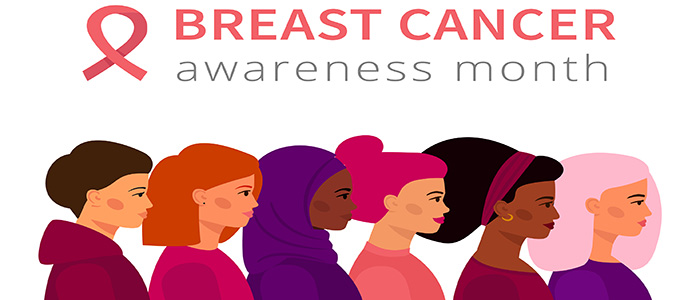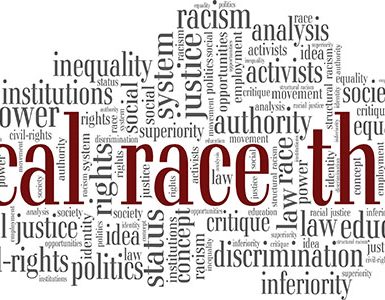Every 2 minutes, a woman in the United States is diagnosed with breast cancer.
It’s an alarming statistic, but there is some good news hiding behind it. For instance, the overall rate of breast cancer deaths, while slowing a bit in recent years, has gone down since the late 1990s. According to 2017 research from the American Cancer Society, the number of women who lost their lives to breast cancer decreased by as much as 40 percent over the previous 25 years. That’s equivalent to roughly 322,000 lives spared.
The overall decline in breast cancer mortality has been attributed to advancements in treatment and increased rates of early detection. Part of this could be due to greater breast cancer awareness, spearheaded by the 1985 launch of National Breast Cancer Awareness Month in October. While the true effectiveness of awareness campaigns at promoting behavior change is a bit inconclusive, proponents hypothesize that women who are aware of the risk factors, signs, and symptoms of breast cancer, as well as the importance of early detection, are more likely to seek out appropriate screening and initiate healthy life change.
But despite these promising trends, disparities do exist.
Public health officials, for instance, have long observed differences in breast cancer characteristics among black women and non-Hispanic white women. And with racial and ethnic groups already at increased risk of poor health—not to mention an increased risk of severe illness and death from COVID-19—doctors and researchers are left with some important questions:
How have women of color fared against breast cancer since the mid-1980s when breast cancer became a nationally-recognized health concern? Moreover, what factors contribute to these disparities, and how can these factors be addressed?
5 Key Facts About Breast Cancer Among Women of Color
According to the U.S. Centers for Disease Control and Prevention (CDC), the American Cancer Society, and other organizations, breast cancer affects women of color in several different ways compared to non-Hispanic white women. Here are five key differences to know:
- The overall incidence of breast cancer is slightly higher for non-Hispanic white women compared to non-Hispanic black women, although both white and black women have the highest incidence overall. The lowest incidence of breast cancer is found among Asian/Pacific Islander, American Indian, and Alaskan Native women.
- On average, black women are diagnosed with breast cancer at a younger age (median 59 years) than white women (median 62 years). But despite earlier age at diagnosis and a slightly lower incidence rate, black women die of breast cancer at a rate that’s about 40 percent higher than the rate seen among white women.
- In addition to being more likely to die of breast cancer compared to white women, black women may be more likely to die earlier. The average age of death from breast cancer for a black woman is 62, while the average age for a white woman is 70. Black women with breast cancer under the age of 50 have double the rate of death compared to white women of the same age, according to 2019 statistics from the American Cancer Society.
- Black women appear rmore likely to be diagnosed with triple-negative breast cancers, which do not respond to hormone therapy and tend to be more aggressive and have a poorer prognosis compared to other types of breast cancer.
- Black/white disparities in breast cancer death grew larger between the late 1990s and early 2000s, but has remained relatively stable since 2011.
Breast Cancer, Communities of Color, and Awareness: What Do We Know?
To sum up the previous section, black women in the United States are disproportionately impacted by breast cancer. They are diagnosed with breast cancer slightly less often than white women are but are more likely to die of the disease and die at a younger age. Why is this so?
Researchers are still learning why, though it’s clear that multiple factors are at play. Communities of color are more likely to face social and economic barriers to “timely, appropriate, and high-quality medical care,” including:
- Discrimination and provider bias
- Unemployment and poverty
- Decreased trust in healthcare providers
- Difficulty in transportation, childcare, and other services which would allow for care access
Certain racial and ethnic groups, including black Americans, are also at a greater risk of comorbid conditions including smoking, diabetes, heart disease, and obesity. Evidence shows these comorbid conditions negatively affect breast cancer diagnosis and survival.
Lastly, women of color may also have different cultural beliefs, attitudes, and knowledge about breast cancer, as well as decreased awareness about the importance of breast cancer screenings. We do know it’s possible to promote preventive behaviors among members of low-income black communities. This has been indicated in one 2018 study published in the Journal of Community Health, which found that a targeted public awareness campaign significantly increased the number of website visits and calls to a local mammography center.
Ultimately, addressing health and racial disparities among women with breast cancer is a nuanced process, perhaps without a simple answer. To the extent that breast cancer awareness may help, data suggests awareness messages must be personally relevant, culturally appropriate, and convenient in order to affect behavioral change. Supporting organizations such as the African American Breast Cancer Alliance and Black Women’s Health Imperative may also help make a beneficial impact.
And however public policy and community-level involvement can close the gap, we must remember that thousands of lives—mothers, grandmothers, daughters, sisters, friends, wives, and colleagues—are at stake.
***
https://www.breastcancer.org/symptoms/diagnosis/trip_neg
https://www.ncbi.nlm.nih.gov/pmc/articles/PMC4523272/
https://www.cdc.gov/coronavirus/2019-ncov/community/health-equity/race-ethnicity.html
https://www.britannica.com/topic/Breast-Cancer-Awareness-Month
https://pubmed.ncbi.nlm.nih.gov/30816360/
https://www.breastcancer.org/research-news/2017-stats-show-survival-rates-improving


















Add comment